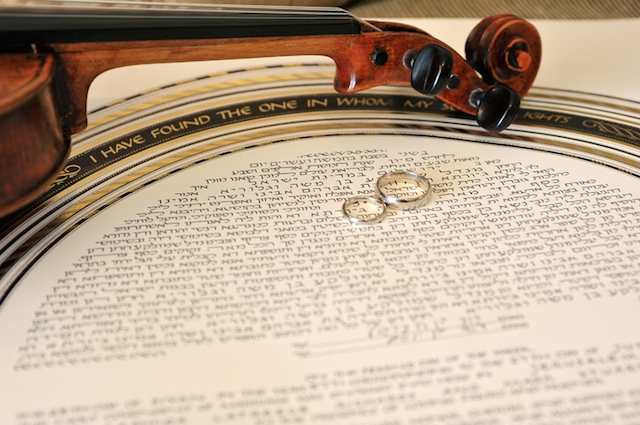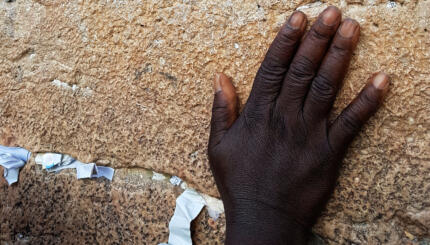A ketubah is a Jewish marriage contract that is signed just prior to the wedding ceremony.
Are you planning a Jewish wedding? Let us help out! Sign up for Breaking the Glass, an email series that will help guide you to the wedding that’s right for you!
Traditionally, the ketubah has been written in Aramaic, with specific language outlining the groom’s financial obligations to the bride, and is then signed, in the groom’s presence, by two male witnesses. While different versions of Jewish wedding contracts date back to biblical times, the ketubah text was codified in the first century CE, and an entire book, or tractate, of the Talmud — Ketubot (the plural of ketubah)— describes its purpose and requirements.
In Israel today, the ketubah, whose name derives from the Aramaic and Hebrew root “katav,” which means “to write,” is binding under civil, as well as religious, law. Elsewhere, the ketubah is binding only under religious law and must be accompanied by civil wedding documents.

Help us keep Jewish knowledge accessible to millions of people around the world.
Your donation to My Jewish Learning fuels endless journeys of Jewish discovery. With your help, My Jewish Learning can continue to provide nonstop opportunities for learning, connection and growth.
While many traditionally observant Jews continue to use the ketubah’s original text, many liberal Jews have adapted the text to make it more gender-inclusive or address other concerns. Although many contemporary Jews regard the ketubah as a sexist document, numerous scholars have argued that it was initially designed to protect women from being abandoned by their husbands or forced to divorce against their will.
Today a wide variety of ketubah texts can be found, with many focusing less on legalities than on the couple’s love for one another and hopes for their shared future. Some have been adapted specifically for same-sex couples, while others are adapted for interfaith couples.

Some couples choose to compose their own ketubah text. While some modern ketubahs are written in Aramaic, others are in Hebrew, English, or other languages. When featuring Aramaic or Hebrew text, the ketubah often also includes a side-by-side translation into English or whatever language is spoken by the couple.
Today many ketubahs are signed by both partners, and at least two witnesses regardless of gender.
Whether traditional or modern, the ketubah is often a beautiful piece of Judaica that the couple frames and then displays in their home after the wedding. Some are custom-made with hand-lettered calligraphy and art, whereas others are purchased pre-made, with spaces for the partners to fill in their names, the date and the wedding’s location.
ketubah
Pronounced: kuh-TOO-buh, Origin: Hebrew, the Jewish wedding contract.

Help us keep Jewish knowledge accessible to millions of people around the world.
Your donation to My Jewish Learning fuels endless journeys of Jewish discovery. With your help, My Jewish Learning can continue to provide nonstop opportunities for learning, connection and growth.



